In theory we would love to have the perfect soil; 45mm minerals sand, silt, and clay), 24mm water holding capacity, 24mm air, and 7mm organic material, both live and dead. This is impractical and in any case soils are in a continuous flux of activity due to external factors beyond its control. Weather, Erosion by wind, Erosion by rainfall and water flow, Chemical reactions, rainfall, the reaction of by products of plants and animals along with the physical movement of the soil by plants and animals, earthquakes and volcanoes all add to the perpetual motion of the soil. Even the plants themselves create acids in order to dissolve the minerals to survive, the roots penetrating the soil move particles all help to change the structure and chemical composition of the soil. Soils are the result of the erosion, corrosion or interactions of both erosion and corrosion at the same time on rocks. This erosion is also the results of weathering by heat and cold through expansion and contraction.
Corrosion can be stimulated by temperature the minerals in the soil, the moisture of the soil changing the acidity or alkalinity strengths of the acids and alkaloids already present or by the enzymes and acids excreted from animals and plants as they strive for their own dominance.
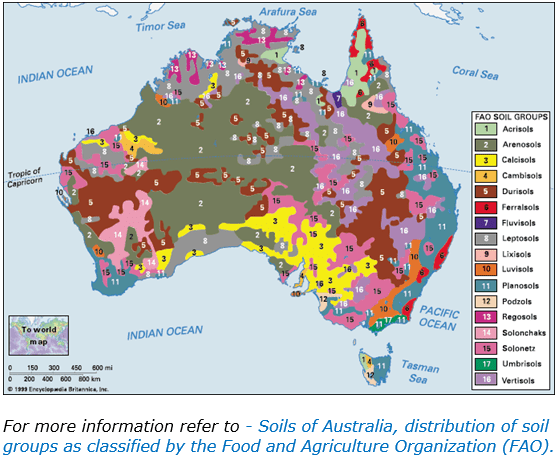
Rocks ain’t rocks: Every rock from every district is different. We have taken the liberty of identifying some of the more common families of rocks found in Australia measuring there acidity or alkalinity using the cross section of results found in various localities as a guide. This may vary in your locality but it is the best available on the market for quick reference. Below are the basic forms rocks are found and the soils derived from them. Please understand this as it gives a quick indication to your soil type. Generally speaking as rocks erode there pH can change dramatically and as they release certain chemicals and oxidation occurs, changes in the pH will also occur. Weathering and leaching generally make the soil more acidic meaning the pH will be lowered further or in limestone areas raise the pH of surrounding soils further.
The pH scale is measured from 1pH the strongest acid to 13pH the strongest alkaloids. Rocks with a pH6.5 to pH7 are taken as neutral depending on the method used. We used water soluble techniques in the field due to cost effectiveness and speed of results. Very few plants will grow on neutral soils and prefer a slightly acid or alkaline habitat for their roots. Australian native plants along the east coast and northern areas favour acid conditions where as those plants found along the Great Australian Bite and southern Western Australia are more likely to accept weak acid soils to alkaline soils. Again remember “Rocks ain’t rocks” and the pH is in continual motion seeking a balance.
Use the following information as a guide to your soils and remember local conditions, the age of the rocks and type of weathering and leaching all affect the final outcome. Even on our own property at Nana Glen the diversity of soil types and aspects varied greatly even on 40 hectares from sandstone, shale, metashales, metasandstones and brown basalt.
Igneous Rocks: are rocks which have solidified from molten material or partially molten material either at the surface or within the Earth’s mantel.
Those that formed from molten magma, deep in the earth’s mantel are known as plutonic or intrusive rocks such as granite or those that formed near its crust are known as extrusive rocks like basalt. Igneous rocks that are rich in quartz (SiO2) are termed “acidic” and include common acidic rocks like granite, rhyolite, pegmatite and obsidian. These rocks are intrusive and generally form course sandy soils with large crystals and are of poor water holding capacity. 4pH to 5pH.
Those with small amounts of quartz are called “intermediate” and include common intermediate rocks Andesitic, likesyenite, diorite, esite and trachyte and form sandy clays to medium clays. 5pH to 6pH.
Those with no quartz are called “Basic” and include common rocks like gabbros, dolerite and basalt. These rocks are extrusive in nature have fine or small crystals and usually form soils or fine textured medium to heavy clays. 5.5pH to 6.5pH.
Igneous rocks are decorative, generally inert but offer no other useful properties such as helping buffer water chemistry in alkaline environments.
Black Basalt: Originating on or near the surface. They usually forms rich red or black soils.
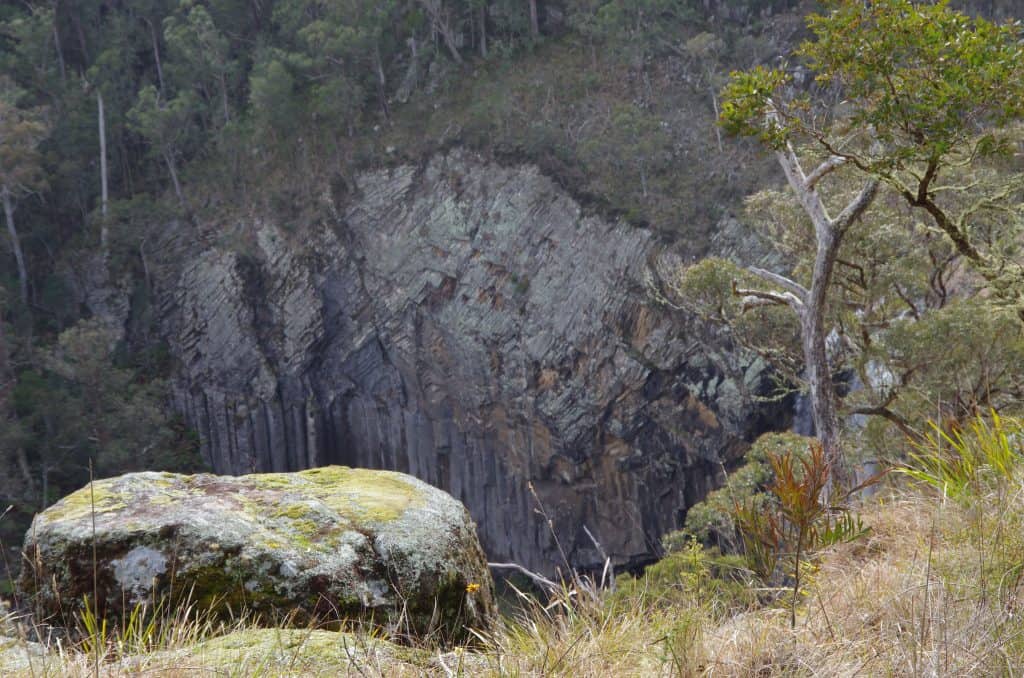
Brown Basalt: Originating on or near the surface. They usually forms poorer grey or brown soils.
Plutonic – Originating at great depth.
Granitic – Is a coarse grained igneous rock composed of approx 20mm quartz and feldspar of which plagioclase and alkali feldspar are present in approximately equal amounts. Large crystals are formed because they formed below the Earth’s crust with in its mantle.
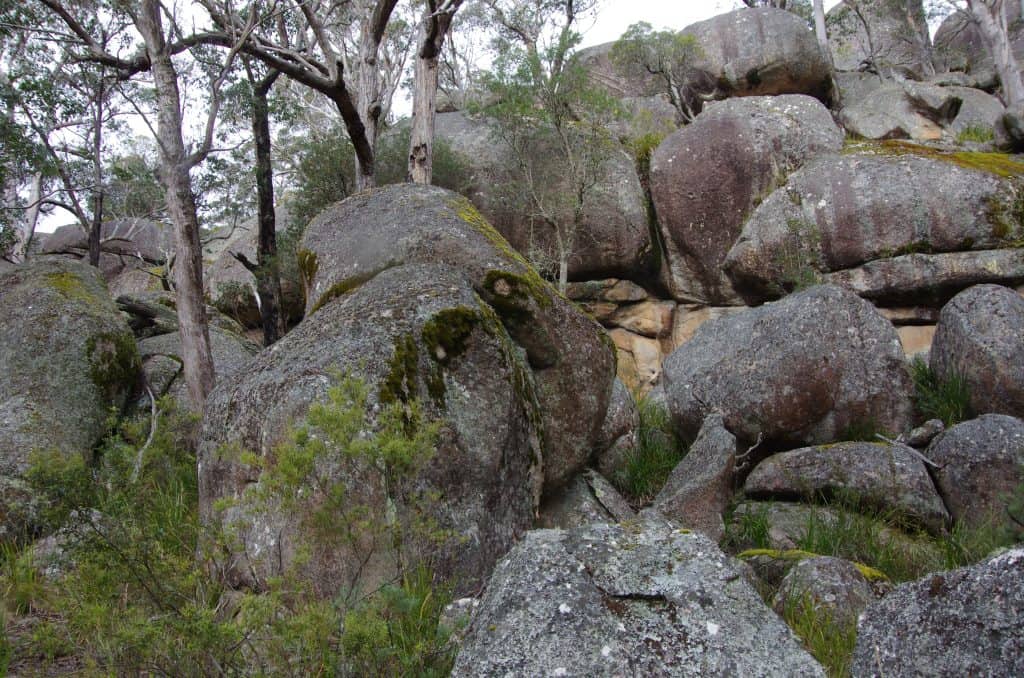
Rhyolite – Is a fine grained, acidic volcanic rock compositionally equivalent to granite with smaller crystals because they formed near the earth’s surface.
Ignimbrite – a poorly sorted, pyroclastic rock formed by a mechanical means after the initial eruption. They are of acidic origin, comprising mainly pumice and ash accumulated as they fell to the ground or gathered in water troughs or rolled together like small pieces of dough, possibly with broken phenocrysts (Large crystals compared to surround material) with dismembered wall material of large volume.
Pumice – a light coloured, highly vesiculated (Blistered air or water pockets within the rock), acid volcanic glass with a low density.
Phenocrysts – Are large mineral grain within a fine grained matrix of an igneous rock, formed before the matrix has solidified.
Magma – Are rocks that have reached temperatures to cause the rocks to become a liquid, generally containing suspended crystals and dissolved gases or volatiles, formed by total or partial melting of solid crustal or mantle rocks. Magmas usually have temperatures of 750 degrees to 1250 degrees.
Lava – Molten rock material on the surface and solidified magma below the surface.
Country Rock (host rock) – Are the rocks into which magma or mineralization has intruded or emplaced.
Volcano – Is a location where magma and volatiles issue through the crust and accumulate.
Volcanic Rock – Are rocks formed by the solidification of lava or pyroclastic material.
Pyroclastic Rock – Are rocks formed by the accumulation of material generated by the explosive fragmentation of magma and/or existing solid rock during a volcanic eruption.
Metamorphic Rock – Are rocks which results from the partial or complete recrystallisation in the solid state under high temperatures and great pressure usually within the earths crust.
Meta-Sediment – Are sedimentary rocks that have undergone some metamorphism but insufficient to obliterate their sedimentary appearance.
Diatreme – a vertical pipe or funnel shaped igneous intrusion, 200 meters to 2000 meters thick and up to 2000 meters deep, made up of a chaotic breccias of blocks of country rock and magmatic material passing down into a dyke. They are forceful intrusions of a mixture of mafic magma, volcanic gases and accidental lithic blocks and clasts.
Sedimentary Rocks: are those that originated as sands and silts deposited in layers or level beds and therefore show layering. The salinity and boron will vary greatly depending on where they were originally formed on land or beneath the ocean. They include common rocks like limestone, marble, sandstone, conglomerate, breccias, shale and schist. Sedimentary rocks vary greatly in their chemical composition, depending upon the material they originated from and the chemicals that cemented the deposit together, such as mud, lime, calcite, iron, quartz or other minerals. 4pH to 8.5pH.
Conglomerate – Are usually on flats with various size particles, tightly or loosely cemented together.
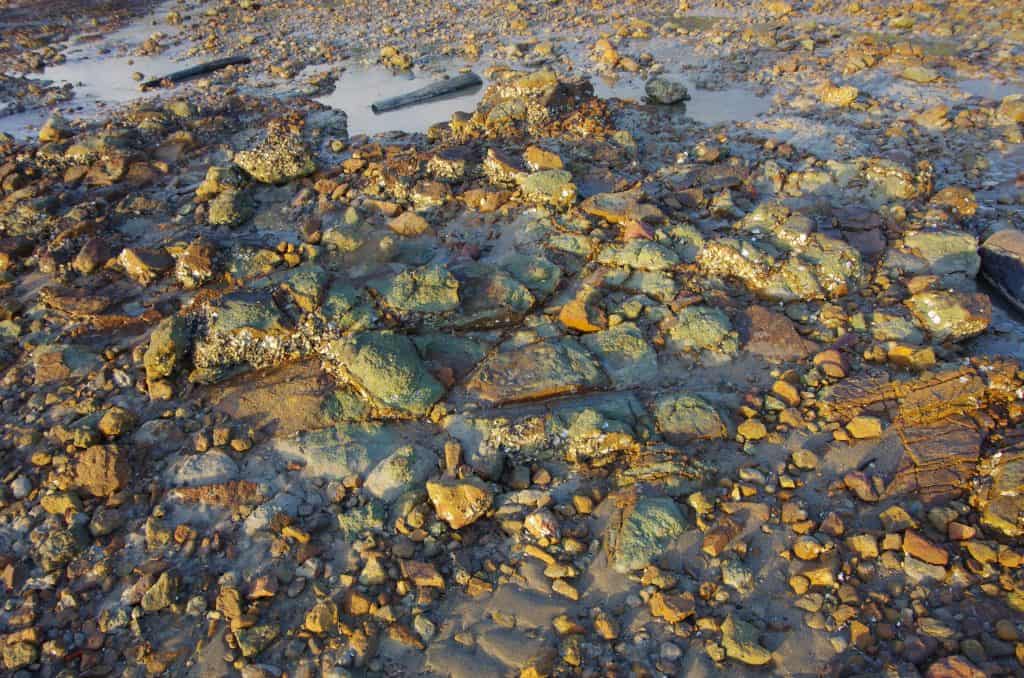
Mudstone – are forms of sedimentary rocks that are generally inert in water but can vary greatly depending on the chemicals that cemented the deposit together, such as mud, lime, calcite, iron, quartz or other minerals. Once exposed to the air they can become soft and crumbly and offer good root penetration with the release of nutrients. Mudstone is made from much finer particles than sandstone. 4pH to 8pH.
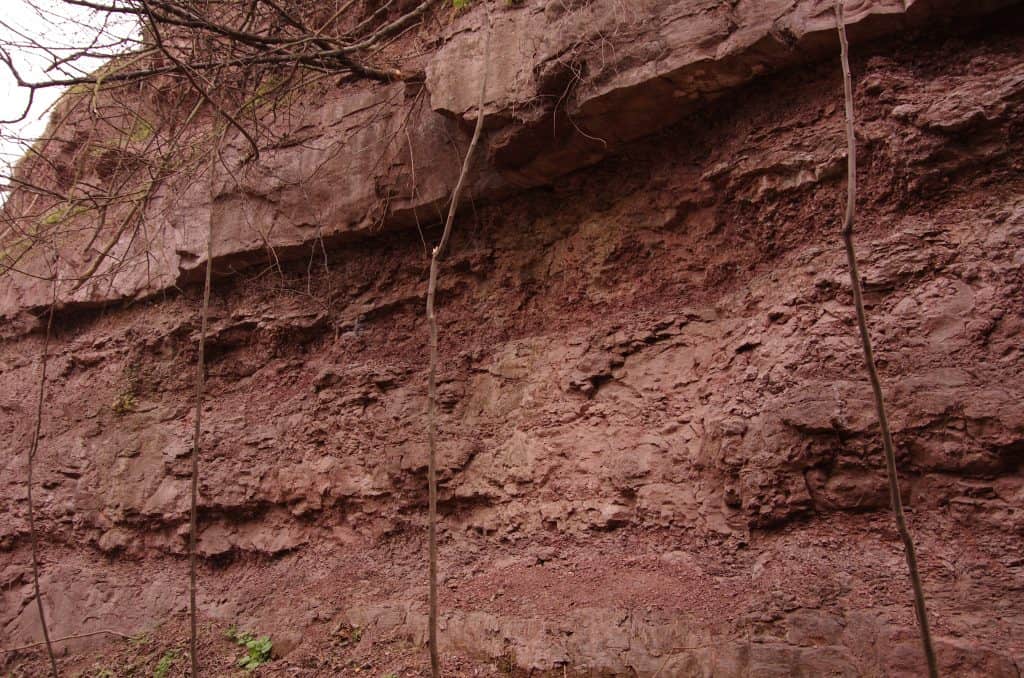
Sandstones: are forms of sedimentary rocks that are generally inert in water but can vary greatly depending on the chemicals that cemented the deposit together, such as mud, lime, calcite, iron, quartz or other minerals. However soft, crumbly rocks such as mudstone, marble, shale and some breccias are crumbly and offer good root penetration with the release of nutrients. 4pH to 8pH.
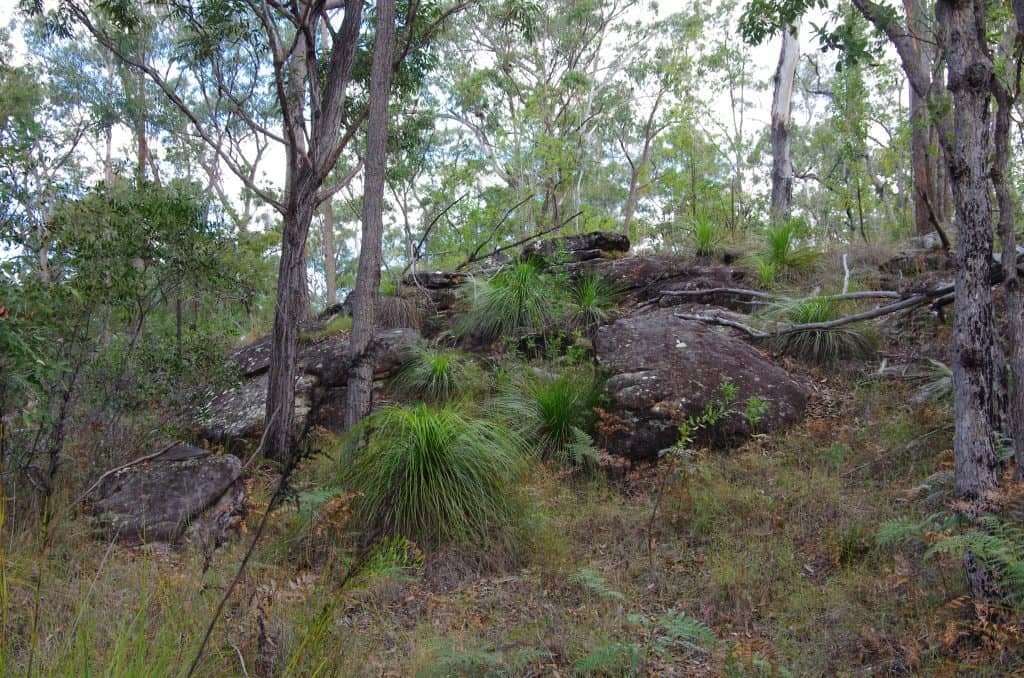
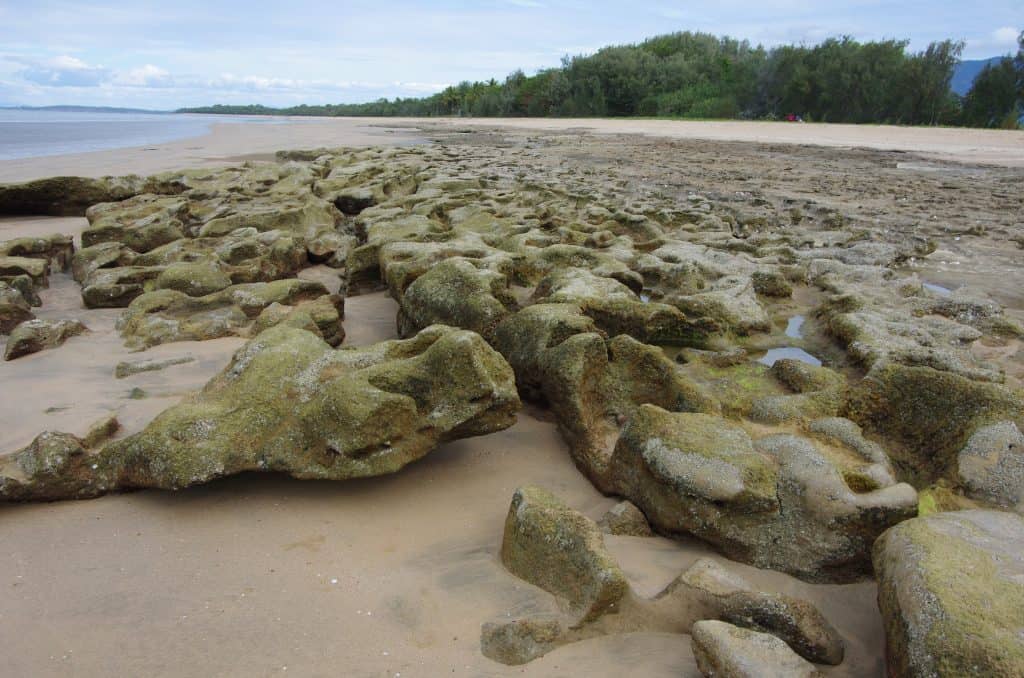
Limestone: is usually white, grey or brown in colour, depending upon mineral content. They all contain varying amounts of calcium carbonate and magnesium carbonate. The properties of limestone correspond with their formation and some contain shells, coral or calcareous algae, while others contain calcium carbonate from chemical activity, as in the case of dolomite, oolite and calcrete. Most limestone forms come from marine deposits and is free of mud and sand. 7.5pH to 9pH.
Limestones have good buffering properties for low pH and high pH soils. The exception is where ironstone is present as in laterites or laterite substratas. The various iron minerals present benefits to plants. 6pH to 7.5pH.
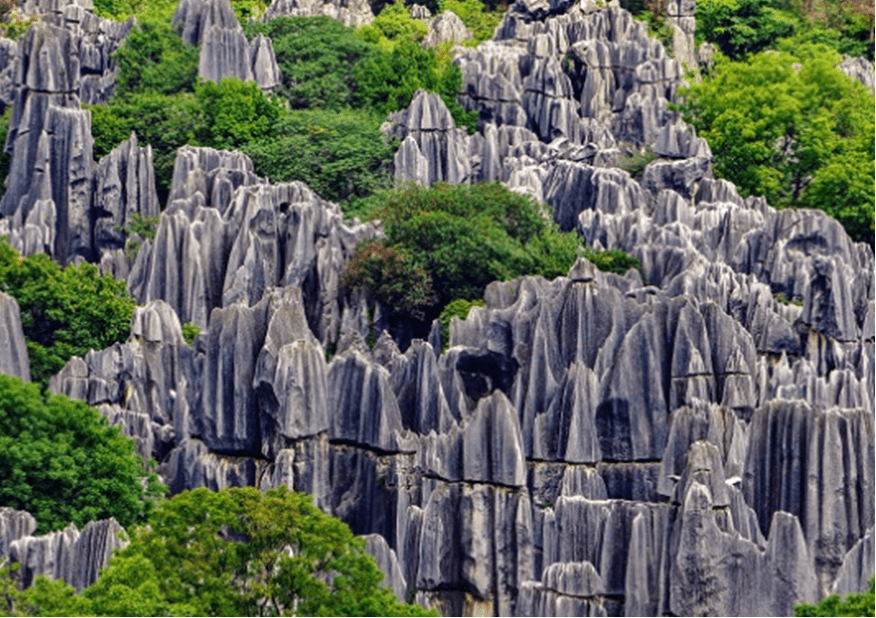
Metamorphic Rocks: form from the alteration of igneous and sedimentary rocks through pressure and heat. This may occur deep below the surface or in small bands where magmas have flowed over the surface of the rocks involved. These include common rocks like hornfels, quartzite, marble, dolomite, slate, phyllite, schist and gneiss. At Nana Glen part of our property had distinct layers of brown basalt and quartz magmas stratified with shale where thin layers of volcanic magmas flowed over sandstone and shale forming hard quartzite metashales and metasandstones. 4pH to 8pH.
Marble: is the most commonly used metamorphic rock. This rock forms when limestones are intruded by magma or covered with lavas. Heat and pressure changes the original limestone to a hard rock. Marbles are generally pale coloured rocks of medium to course grain size. The main mineral in marble is calcium carbonate. It has good buffering properties and is used as an eco-friendly alternative to coral rubble or coral sand to increase the soils pH. 8pH to 9pH.
Dolomite: forms from compressed depositions of calcium and magnesium carbonate and is hard and non-porous. It varies in colour from near white, brown, grey to black and is used where hard water needs to be softened or a high pH and good buffering are needed or wish to be maintained. Water worn dolomite gravels make excellent substrata. 6.5pH to 7.5pH.
Slate: is altered shale or mudstone and is non-porous. It fractures in sheets and can be easily be shaped to build rock piles. Slates make good flat surfaces for roots to penetrate in horizontal planes or vertical planes depending on previous rifts and bending of the earth’s surface. 4pH to 7pH.
Accumulated sands: are those soils found along the coast from tidal and wind accumulating mineral sands, silicon sands and shells and corals. Accumulated sands may be high in vegetable matter and often contain layers of young peaty matter. They have very low soil fertility and the ability of the soil to supply plant nutrients is consequently low. They have a low water holding capacity and are generally very porous and course. Most minerals for plant growth are attained from sea sprays.
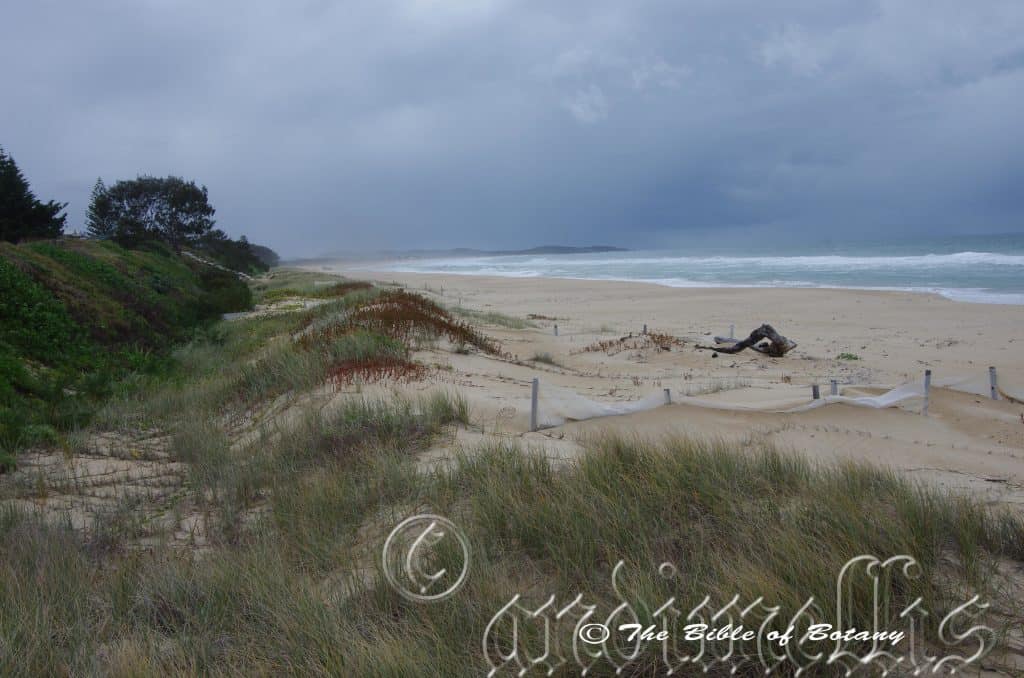
Soils ain’t Soils and Australian Soils are very different to most other areas of the world. They generally fall into fourteen orders. The character of the soil orders reflects the arid, strongly-weathered nature of the Australian continent and its age.
Types of soils
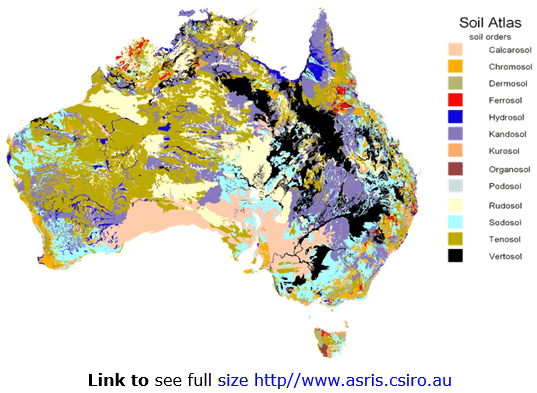
Vertosols: are the most common soil in Queensland, covering 29 per cent of the State of Queensland and are characterized by their colour including brown, grey or black soils. The soils shrink, crack open when dry and expand greatly when wet. They commonly form hummocky reliefs called Gilgai with very high soil fertility and the ability of soil to supply plant nutrients. They have a large water holding capacity.
Ferrosols and Dermosols: are well drained soils which are red or yellow-brown in colour and have clay-loam to clay textures. These soil types are usually associated with volcanic landscapes of basalt, and are mainly located along the Great Dividing Range.
Dermosols are red, brown, yellow, grey or black coloured and have a loam to clay textures. These types of soil are mainly found throughout the higher rainfall coastal and sub-coastal forested regions.
Chromosols and Kurosols: Both these soil orders are texture contrast soils with permeable sub soils. Kurosols are strongly acid whereas Chromosols are not.
Kandosols: are red, yellow and grey massive earthy soils. They generally have a sandy to loamy surface soil, grading to porous sandy clay sub soils with low fertility and poor water holding capacity. A wide range of crops can be grown on these soils where rainfall is higher or where irrigation is available.
Sodosols: are texture contrast soils with impermeable sub soils, due to an elevated concentration of sodium. These soils occupy a large area of inland Australia. Generally Sodosols have a low nutrient status and are very susceptible to erosion and dry land salinity, if vegetation is removed.
Calcarosols: Calcarosols are lime rich soils with sandy or loamy textures that only become more clayey with depth. They occur in the arid areas, southern and south western areas of Australia, usually on limestone, calcium-rich sedimentary rocks and windborne deposits.
Rudosols, Tenosols and Podosols: These soil orders are generally of low fertility and low water holding capacity.
Rudosols and Tenosols are poorly developed but widespread and can be shallow and stony.
Podosols are sandy soils that occur in the more humid coastal regions including areas such as Fraser Island and Shelburne Bay.
Hydrosols: Hydrosols are soils that are saturated with water for long periods of time (at least several months), typically of grey (or greenish-grey) colour or contain strongly constrasting iron stained colours (mottles). These soils are mainly found near coastal areas. However, many inland wetlands are also dominated by Hydrosols even though these areas may only be intermittently inundated.
Organosols: Occur in very minimal wetland areas along the coast in high rainfall zones. Organosols are sandy, rich in peat and other humus rich layers.
Soil Properties
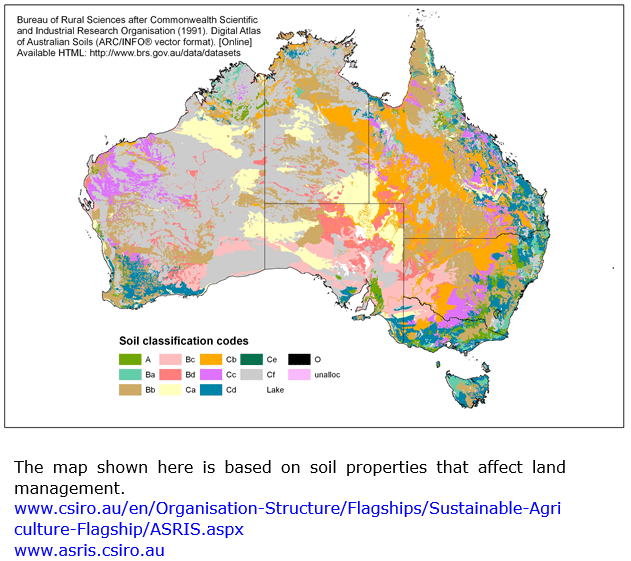
The most common soil types found in desert Australia on this map is the Cf mapping unit that includes shallow sand soils, shallow loam soils, shallow clay soils and predominately bare rock.
Map Key
A Soils generally without limiting chemical or physical properties
Ba Soils with predominantly chemical limitations; deep, highly structured soils with high initial fertility
Bb Soils with predominantly chemical limitations; soils naturally low in nutrients
Bc Soils with predominantly chemical limitations; calcareous soils.
Bd Soils with predominantly chemical limitations; saline soils.
Ca Soils with predominantly physical limitations; deep coarse- textured soils.
Cb Soils with predominantly physical limitations; cracking clays.
Cc Soils with predominantly physical limitations; hard-setting soils with dispersible clay subsoils.
Cd Soils with predominantly physical limitations; soils with periodic subsurface water logging.
Ce Soils with predominantly physical limitations; soils with periodic surface water logging.
Cf Soils with predominantly physical limitations; shallow soils
O Organic soils are those soils with high quantities of organic material.
Unallocated No allocation to a ‘Soil Resources’ map unit
LAKE Lake
NO DATA No data
In essence soils take on 3 forms sand, loams and clay. Most the soils ain Australia are sandy loams. Generally soil textures determine the properties and behaviour of soils to react to agriculture or the environment.
| Property/behavior | Sand | Silt | Clay |
| Water holding capacity | Low | Medium to high | High |
| Aeration | Good | Medium | Poor |
| Drainage rate | High | Slow to medium | Very slow |
| Soil organic matter level | Low | Medium to high | High to medium |
| Decomposition of organic matter | Rapid | Medium | Slow |
| Warm-up in spring | Rapid | Moderate | Slow |
| Compactability | Low | Medium | High |
| Susceptibility to wind erosion | Moderate (High if fine sand) | High | Low |
| Susceptibility to water erosion | Low (unless fine sand) | High | Low if aggregated, otherwise high |
| Shrink/Swell Potential | Very Low | Low | Moderate to very high |
| Sealing of ponds, dams, and landfills | Poor | Poor | Good |
| Suitability for tillage after rain | Good | Medium | Poor |
| Pollutant leaching potential | High | Medium | Low (unless cracked) |
| Ability to store plant nutrients | Poor | Medium to High | High |
| Resistance to pH change | Low | Medium | High |
Further Comments from Readers:
All information is included in good faith and has been thoroughly researched prior to printing. The website or the author does not warrant or guarantee the accuracy of any information on these pages, nor does the website or the author accept any responsibility for any loss arising from the use of the information found within. The views and opinions are strictly those of the author or those members who chose to actively participate in the contents herein.
“Hi reader, it seems you use The Bible of Botany a lot. That’s great as we have great pleasure in bringing it to you! It’s a little awkward for us to ask, but our first aim is to purchase land approximately 1,600 hectares to link several parcels of N.P. into one at The Pinnacles NSW Australia, but we need your help. We’re not salespeople. We’re amateur botanists who have dedicated over 30 years to saving the environment in a practical way. We depend on donations to reach our goal. If you donate just $5, the price of your coffee this Sunday, We can help to keep the planet alive in a real way and continue to bring you regular updates and features on Australian plants all in one Botanical Bible. Any support is greatly appreciated. Thank you.”
In the spirit of reconciliation we acknowledge the Bundjalung, Gumbaynggirr and Yaegl and all aboriginal nations throughout Australia and their connections to land, sea and community. We pay our respect to their Elders past, present and future for the pleasures we have gained.